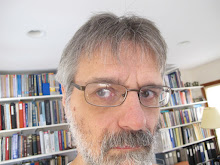Preface: I’ve been reading “Naturalizing Epistemology” by Hilary Kornblith, Ed., which reprints a couple of papers by W.V.O. Quine, “Epistemology Naturalized” and “Natural Kinds”, along with papers by others that relate to questions raised by Quine in those essays, or raised by others in response to those essays. The present post was inspired by ideas in the first few essays in that book.
“Similarity”, I think, arises from replaceability. Two objects are similar to the degree to which you could replace one with the other without salient change in the state-of-affairs under analysis. Obviously “salient” and even “change” are terms in need of further analysis.
Perceptually, we have “hardwired” (innate) and “softwired” (learned) structures in our brains (primarily – with some functionality distributed elsewhere in our somas) to identify different kinds of similarity. Hardwired structures include things like edge detectors and angle detectors. Softwired structures are built up from such. Questions that can be asked include: How would such features have come to evolve? Why are they so apparently efficacious? Just how reliably efficacious are they?
The nature of organisms suggests categorization of environmental factors on the basis of their effects on the organism. Some factors encourage growth or reproduction. Some limit these or produce death or extinction. With complex organisms, some factors have these effects on a part of the organism, only, and may have very different effects (or little effect, at all) on other parts – stimulating production of this hormone, while retarding production of that, for example. Replaceability of these factors with respect to their organic effects is the basis of categorization, and the source of similarity. The salience of change can be suitably quantified in each case (e.g., rate of cell reproduction or hormone production).
Since they derive from our interactions with the world, our categories and sense of similarity relate closely to the world. But there is still an element of subjectivity. All categories are relative to an analysis. Some categories may be relatively stable across all conceivable analyses we may do. These we tend to characterize as “natural kinds”. But even natural kinds such as species can have fuzzy edges for certain analyses. (Exactly where, on the evolutionary tree, does a particular species begin?) An intelligence arising from a very different history (a silicon-based life form, say, or a spontaneously evolving “artificial” intelligence) might cleave the world very differently than we do. But in some categories (mineralogy, biological lineages) if it made an analysis at all, there would probably be considerable correspondence with our own. Natural kinds are not meaningless, nor arbitrary, but neither are they perfectly precise.


I think that a key issue is whether the categories defining "natural kinds" ground our theoretical orientations, or whether, in contrast, we derive those categories from our theories. For example, we see "bird" as a more of a natural kind than flying thing,i.e. we would put pigeons in the same category as penguins rather than bees, even though bees and pigeons fly, and penguins don't. Does that derive from our acceptance of the theory of evolution, or did that categorization allow the theory of evolution to emerge.
ReplyDelete